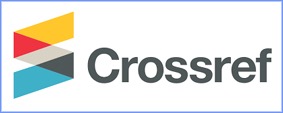Analisis Wacana Kritis pada Debat Pilwakot Surakarta Putaran Kedua Tahun 2020
DOI:
https://doi.org/10.29240/estetik.v4i1.2197Keywords:
Debate, Functional Theory, Discourse AnalysisAbstract
This study aims to describe the discourse analysis contained in the second round of the Surakarta pilwakot debate in 2020. In a critical discourse analysis study, the debate can be analyzed using William L. Benoit's functional theory which includes acclaims or claims, attacks or attacks, and defends or defends. This research uses descriptive qualitative research by describing the functional theory contained in the second round of the Surakarta Pilwakot debate. The documentation technique was used to collect data by watching, viewing, and writing the most important points in the second round of the Solo Pilwakot debate live video broadcast. Content analysis techniques were used in this study to obtain the forms of acclaim, attacks, and defends used by candidate pairs in arguing. Based on the results of the analysis, the two pairs of candidates equally made acclaims or claims, recognition as one way to convince their supporters. As for attacks or attacks, candidate pair number 1 is superior in attacking candidate pair number 2. On defends, candidate pair number 1 (Gibran-Teguh) defends based on empirical data or facts as an aspect of knowledge which supports his argument. Another case with candidate pair number 2 (Bagyo-Supardjo) who is not strong enough in doing a defense or defends through answers or responses that are out of the context in question
Downloads
References
Ahmad, N. (2012). Manajemen Komunikasi Politik & Marketing Politik (Cetakan Pe). Yogyakarta: Pustaka Zaman.
Eriyanto. (2001). Analisis Wacana, Pengantar Analisis Teks Media. Yogyakarta: LKis.
Fauzan, U. (2013). Analisis Wacana Kritis Model Fairclough, 5(2).
Fauzan, U. (2014). Analisis Wacana Kritis Dari Model Faiclough Hingga Mils, 6(1).
Istiqomah, R. R. (2004). Kampanye Politik di Televisi sebagai Budaya Populer Ria Rahmatul Istiqomah, 90–96.
Mustofa, A. (2010). Analisis Wacana Percakapan “Debat TV ONE.†Universitas Sebelas Maret.
Pratama, H., Nurcahyoko, K., Hertanto, M. A., Marina, R., Rosyidah, S., & Kristianto, V. A. (2019). Panduan Debat Kompetitif (Cetakan Pe). Yogyakarta: Erhaka Utama.
Purnaweni, H. (2004). Demokrasi Indonesia : Dari Masa ke Masa. Administrasi Publik, 3 No 2, 1–16.
Simanjuntak, H., & Salem, L. (2017). Analisis Wacana Kritis Debat Publik Pilkada DKI Jakarta Putaran Kedua Tahun 2020, 1–11.
Sudrajat. (2010). Yunanni Sebagai Icon Peradaban Barat, Vol.III, N, 11–29.
Sugiyono. (2018). Metode Penelitian Kualitatf. Bandung: Alfabeta.
Wanfau. (2020). Analisis Isi Debat Capres RI Pemilu Tahun 2019. IAIN Bengkulu.
Downloads
Published
How to Cite
Issue
Section
Citation Check
License
Copyright (c) 2021 Indah Wahyuningsih

This work is licensed under a Creative Commons Attribution-NonCommercial-ShareAlike 4.0 International License.
Authors who publish with ESTETIK : Jurnal Bahasa Indonesia agree to the following terms:
- Authors retain copyright and grant the journal right of first publication with the work simultaneously licensed under a Creative Commons Attribution-NonCommercial-ShareAlike 4.0 International License (CC BY-NC-SA 4.0) that allows others to share the work with an acknowledgment of the work's authorship and initial publication in this journal.
- Authors are able to enter into separate, additional contractual arrangements for the non-exclusive distribution of the journal's published version of the work (e.g., post it to an institutional repository or publish it in a book), with an acknowledgment of its initial publication in this journal.
- Authors are permitted and encouraged to post their work online (e.g., in institutional repositories or on their website) prior to and during the submission process, as it can lead to productive exchanges, as well as earlier and greater citation of published work (See The Effect of Open Access).






